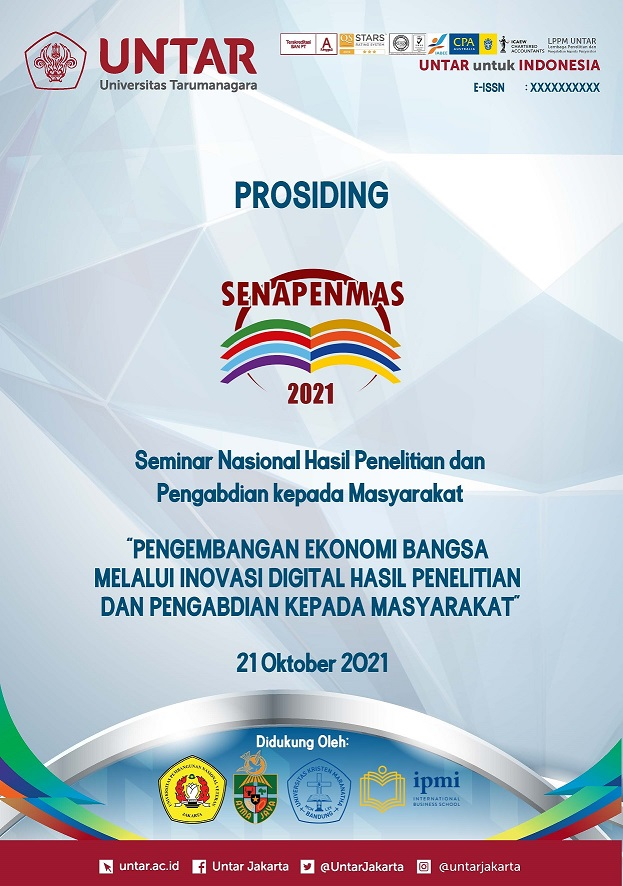MEMBINA HUBUNGAN YANG POSITIF ANTARA GURU DAN SISWA DI MASA PANDEMI DI PKBM X, BOGOR
Main Article Content
Abstract
The COVID-19 pandemic dramatically reduced direct interactions between teachers and students during learning hours. As a consequence, teachers struggle to gauge the student’s ability and cannot fully understand the learning situation at home for each student, especially adolescents. This was experienced by PKBM X who since the pandemic has had profound trouble to reach out to their students. PKBM X is a non-formal high school that upholds the values of equality and democracy, and teachers bear a role to understand the condition of each student and try to help whenever necessary. However, according to interviews, some teachers are unsure about how to establish a relationship with students, especially in this time of pandemic. There are also teachers who are too involved emotionally with the student’s problems, to a point where they feel emotionally burdened. Utilizing the problem tree analysis, it is concluded that the relationship between teachers and students isn’t optimal. To that end, a training was designed to inform participants about positive teacher -student relationship, especially during pandemic. With this knowledge, teachers realized the importance of positive teacher -student relationships and how to initiate positive interactions in times of pandemic. Not only that, teachers are also taught to manage their expectations about the teacher -student relationship, so that teachers continue to provide support without being personally affected if the student is not easily approached. After the training, teacher’s knowledge about the positive teacher-student increased, and teachers were able to develop action plans for their students.
Pandemi COVID-19 membuat interaksi langsung di jam belajar mengajar antara guru dan siswa berkurang. Guru menjadi sulit mengetahui pemahaman dan keadaan siswa.. Hal ini dialami oleh PKBM X yang sejak masa pandemi merasa sulit untuk menjangkau siswa. Padahal, PKBM X adalah sekolah yang menjungjung tinggi nilai kesetaraan dan kekeluargaan, dan guru memiliki peran untuk mengetahui kondisi siswa dan berusaha membantu. Hanya saja, berdasarkan wawancara, sejumlah guru ragu bagaimana menjalin interaksi dengan siswa, terutama di masa pandemi ini. Ada juga guru yang malah terlalu terlarut dengan masalah siswa, sehingga merasa terbeban secara emosional. Dengan metode analisis pohon masalah, ditemukan bahwa hubungan guru dan siswa di PKBM X pada saat ini kurang optimal. Untuk itu, dirancanglah sebuah pelatihan seputar pengetahuan membina hubungan guru dan siswa yang positif, terutama di masa pandemi ini. Dengan pengetahuan ini, guru diharapkan dapat menyadari pentingnya hubungan guru dan siswa yang positif serta bagaimana memulai interaksi positif di masa pandemi. Tak hanya itu, guru juga diajak untuk mengelola ekspektasi tentang hubungan guru dan siswa yang positif, sehingga guru tetap memberikan bantuan terbaiknya tanpa terdampak secara personal jika kondisi siswa tidak mudah dijangkau atau didekati. Melalui pelatihan ini, pengetahuan guru tentang hubungan guru dan siswa meningkat, dan guru dapat menentukan rencana aksi yang dapat mereka lakukan untuk siswa di PKBM X.
Article Details
References
Ansari, A., Hofkens, T. L., & Pianta, R. C. (2020). Teacher-student relationships across the first seven years of education and adolescent outcomes. Journal of Applied Developmental Psychology, 71, 101200. doi: 10.1016/j. appdev.2020.101200
Pianta, R. C., Hamre, B., & Stuhlman, M. (2003). Relationships between teachers and children. In W. M. Reynolds & G. E. Miller (Eds.), Handbook of psychology: Educational psychology, Vol. 7, pp. 199–234). John Wiley & Sons Inc.
Pianta, R. C. (2016). Classroom processes and teacher-student interaction: Integrations with a developmental psychopathology perspective. In D. Cicchetti (Ed.). Developmental psychopathology: Risk, resilience, and intervention (pp. 770–814). Hoboken, NJ, US: John Wiley & Sons Inc. https://doi.org/10.1002/9781119125556. devpsy415.
Prewett, S. L., Bergin, D. A., & Huang, F. L. (2019). Student and teacher perceptions on student-teacher relationship quality: A middle school perspective. School Psychology International, 40(1), 66-87. doi: 10.1177/0143034318807743
Roorda, D.L., Koomen, H.M., Spilt, J., & Oort, F. (2011). The Influence of Affective Teacher– Student Relationships on Students’ School Engagement and Achievement. Review of Educational Research, 81, 493 - 529. Doi: 10.3102/0034654311421793
Uslu, F., & Gizir, S. (2016). School Belonging of Adolescents: The Role of Teacher- Student Relationships, Peer Relationships and Family Involvement. Kuram Ve Uygulamada Egitim Bilimleri, 17, 63-82. doi: 10.12738/ESTP.2017.1.0104
Sabol, T. J., & Pianta, R. C. (2012). Recent trends in research on teacher–child relationships. Attachment & human development, 14(3), 213-231.
Spilt, J. L., Koomen, H. M., & Thijs, J. T. (2011). Teacher wellbeing: The importance of teacher–student relationships. Educational psychology review, 23(4), 457-477.
Milatz, A., Lu?ftenegger, M., & Schober, B. (2015). Teachers’ relationship closeness with students as a resource for teacher wellbeing: A response surface analytical approach. Frontiers in psychology, 6, 1949. doi: 10.3389/fpsyg.2015.01949
Settanni, M., Longobardi, C., Sclavo, E., Fraire, M., & Prino, L. E. (2015). Development and psychometric analysis of the student–teacher relationship scale–short form. Frontiers in psychology, 6, 898.


